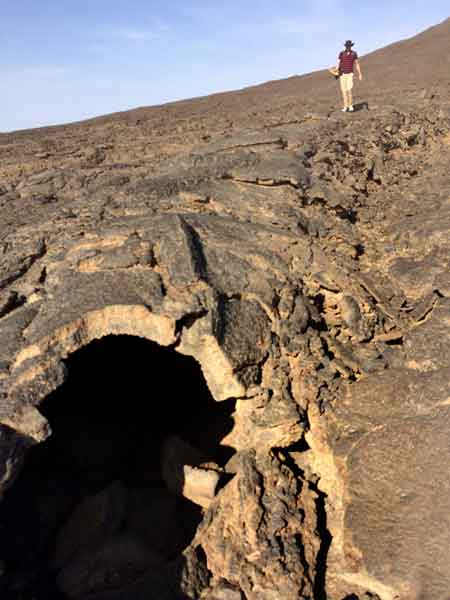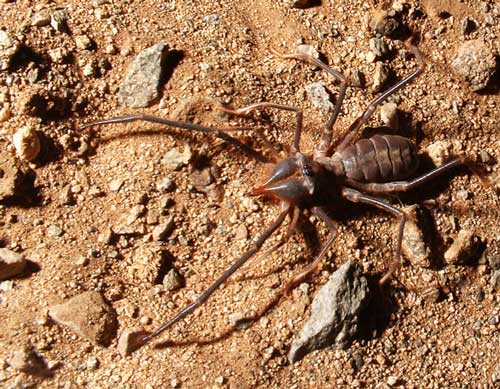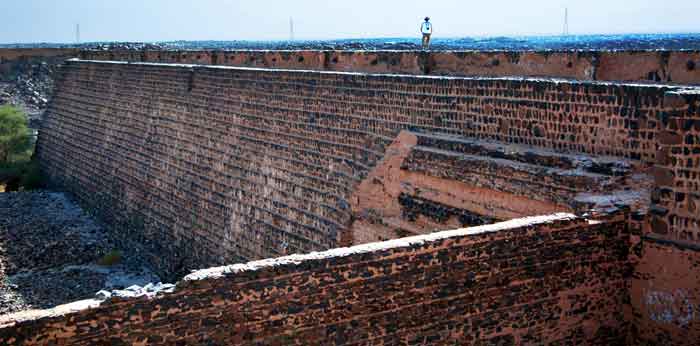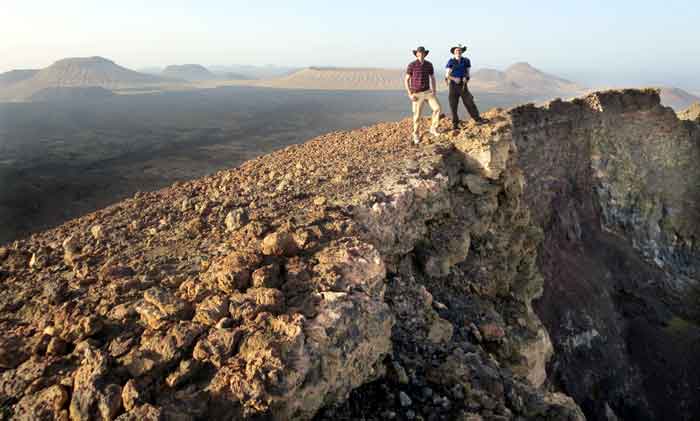|
David Jenkins, who has worked
for Saudi Aramco project management at King
Abdullah University of Science and Technology (KAUST)
the past two years, and David Ketcheson, a 5-year professor
of
applied math at KAUST (both American), ventured throughout
Harrat
Khaybar on 24-26 April 2014. Here is Jenkins' report on the
expedition. The findings of the two Davids
include the first known photos taken
inside lava tubes on the slopes of Jebel Qidr. It is supposed that Qidr
erupted around 300 years ago, making its lava caves the youngest on the
Arabian Peninsula. During a short visit to Qidr by helicopter, Saudi
Volcanologist John Roobol, found long, spindly lava stalactites in a
lava tube which so far has not been relocated. John Pint
 Near the end of April, 2014, we
took a quick weekend reconnaissance trip up to Harrat
Khaybar. We climbed Jebel Qidr and
found multiple lava tubes on the south-eastern slopes, many big enough
to crouch & walk through. There wasn't a lot in them,
besides
piles of a flaky white substance in which we could see a number of
marble size chunks. I'm not sure if it is some type of
mineral,
or perhaps baked bird-dung. Near the end of April, 2014, we
took a quick weekend reconnaissance trip up to Harrat
Khaybar. We climbed Jebel Qidr and
found multiple lava tubes on the south-eastern slopes, many big enough
to crouch & walk through. There wasn't a lot in them,
besides
piles of a flaky white substance in which we could see a number of
marble size chunks. I'm not sure if it is some type of
mineral,
or perhaps baked bird-dung.

Jebels
Abyad and Bayda, seen from the top of Qidr
We
attempted to find a road north to Rumahah
Cave
from the paved road that runs just north of Jebel Qidr, but the roads
we found were too rugged, and we didn't have the time (or extra spare
tire), to make the attempt.
On our way to Umm
Jirsan Cave,
we blew out the side wall of a tire, and swapped it out for our only
spare, so we left the car, and hiked the rest of the way to
Jirsan. We got their at dusk, and traversed all the sections
at
nightfall. We found multiple bone caches, as well as some
small
fresh dung, and many prints, that looked the size of those
made by
desert foxes. As far as the bones go, most appeared to be
camel
bones, but there was also a skull of what looked like a desert fox, and
lots of smaller limbs that we couldn't readily identify.
 That night, while being extra
cautious driving the car back to the
paved road, we came across a camel spider in our headlights, that was
roughly 2-3 times the size of a tarantula. He moved
remarkably
fast, and would turn and attack momentarily, and then continue his run
while we tried to photograph it. That night, while being extra
cautious driving the car back to the
paved road, we came across a camel spider in our headlights, that was
roughly 2-3 times the size of a tarantula. He moved
remarkably
fast, and would turn and attack momentarily, and then continue his run
while we tried to photograph it.
The next morning We explored
the ancient Fort & abandoned city, just Northwest of Khaybar,
and
then the Dam just to the south.

Ancient Khaybar Dam, which
captured runoff from Harrat Khaybar
Overall,
a great trip, especially for doing it all in one weekend.
However,
we're planning our return to hopefully hit Rumahah Cave,
Quradi Cave,
and the
petroglyphs at Shwaymis, as well as to climb Jebel
Abyad.
Dave Jenkins

The
Two Davids On Top of Jebel Qidr
|

